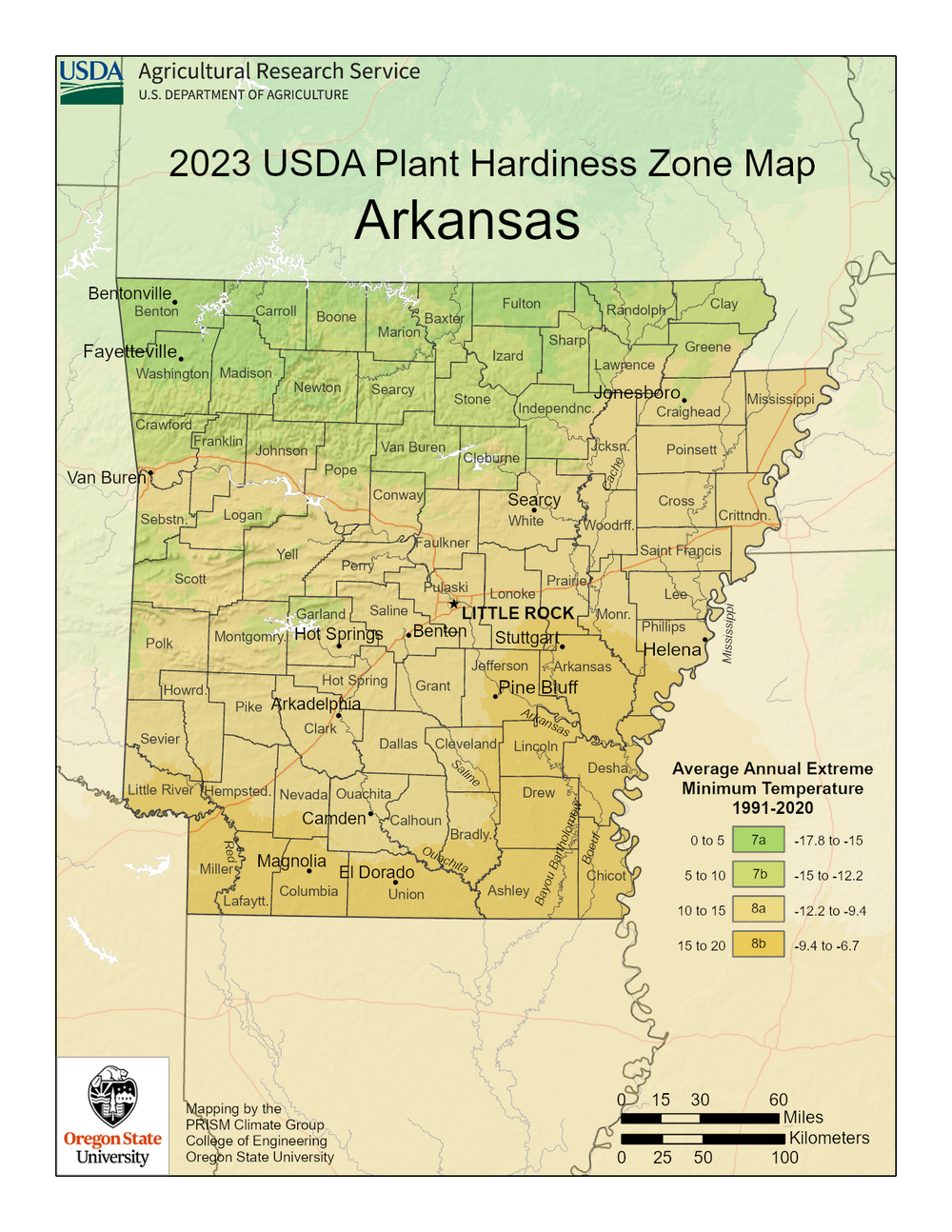Image from USDA
Characteristics of Arkansas Planting Region
Arkansas has a humid subtropical climate characterized by hot summers and mild to cool winters. The state experiences all four seasons, with significant variations between the northwestern highlands and the southeastern lowlands.
Most Arkansas receives ample rainfall throughout the year, with annual precipitation ranging from 40 to 60 inches.
As a gardener in Arkansas, you may encounter:
|
|
Despite these challenges, Arkansas offers a generous growing season. Most areas enjoy frost-free days from early April through late October, providing about 180-210 days for cultivation annually.

Challenges of Growing in Arkansas
1. Temperature Fluctuations
Arkansas can experience rapid temperature changes, particularly in spring and fall. Late frosts can damage early plantings, while summer heat can stress certain crops.
2. High Humidity
The state's humid climate can foster fungal diseases and garden pest infestations. Proper air circulation and disease-resistant varieties are essential considerations.
3. Varied Soil Conditions
Arkansas's diverse geology results in various soil types, from acidic in the highlands to alkaline in some lowland areas. Soil testing and amendment are often necessary for optimal growth.

The Benefits of Using a Greenhouse in Arkansas
While Arkansas's climate allows for a long outdoor growing season, a greenhouse can enhance your gardening experience and yield.
1. Extend Your Growing Season
- Without a Greenhouse: The typical outdoor growing season runs from early April to late October in central Arkansas. Northern areas may have a slightly shorter season due to later spring frosts.
- With a Greenhouse: Greenhouse owners can start planting early in February and continue well into December. This extension allows for multiple harvests and the cultivation of crops that typically struggle in Arkansas's summer heat or winter cold.
Learn more about your area's specific growing dates and the best vegetables to plant in each part of Arkansas.


Customer images of their Greenhouse setup in a similar climate
2. Grow a Wider Variety of Vegetables Without a Greenhouse:
- Without a Greenhouse:
Arkansas's outdoor gardens thrive with heat-loving plants such as:
|
|
- With a Greenhouse:
A controlled environment allows for a wider variety of plants, including those that prefer cooler temperatures or lower humidity.
You could grow:
|
|
|

Why Planta Greenhouses?
- Wind resistant up to 65 mph (learn more about how our greenhouses hold up in high-altitude climates).
- Withstands a snow load of up to 98 psf (480kg/square meter).
- Made with a heavy-duty galvanized steel frame.
- Polycarbonate panels provide 100% protection against UV rays.
- The Sungrow greenhouse is bell-shaped - allows the wind, snow, and hail to slide off the sides.
- Extendable (Sungrow, Sigma and Farmer models can be extended beyond 100ft)
- Made in Europe and are exclusively imported
- Maintenance-free

